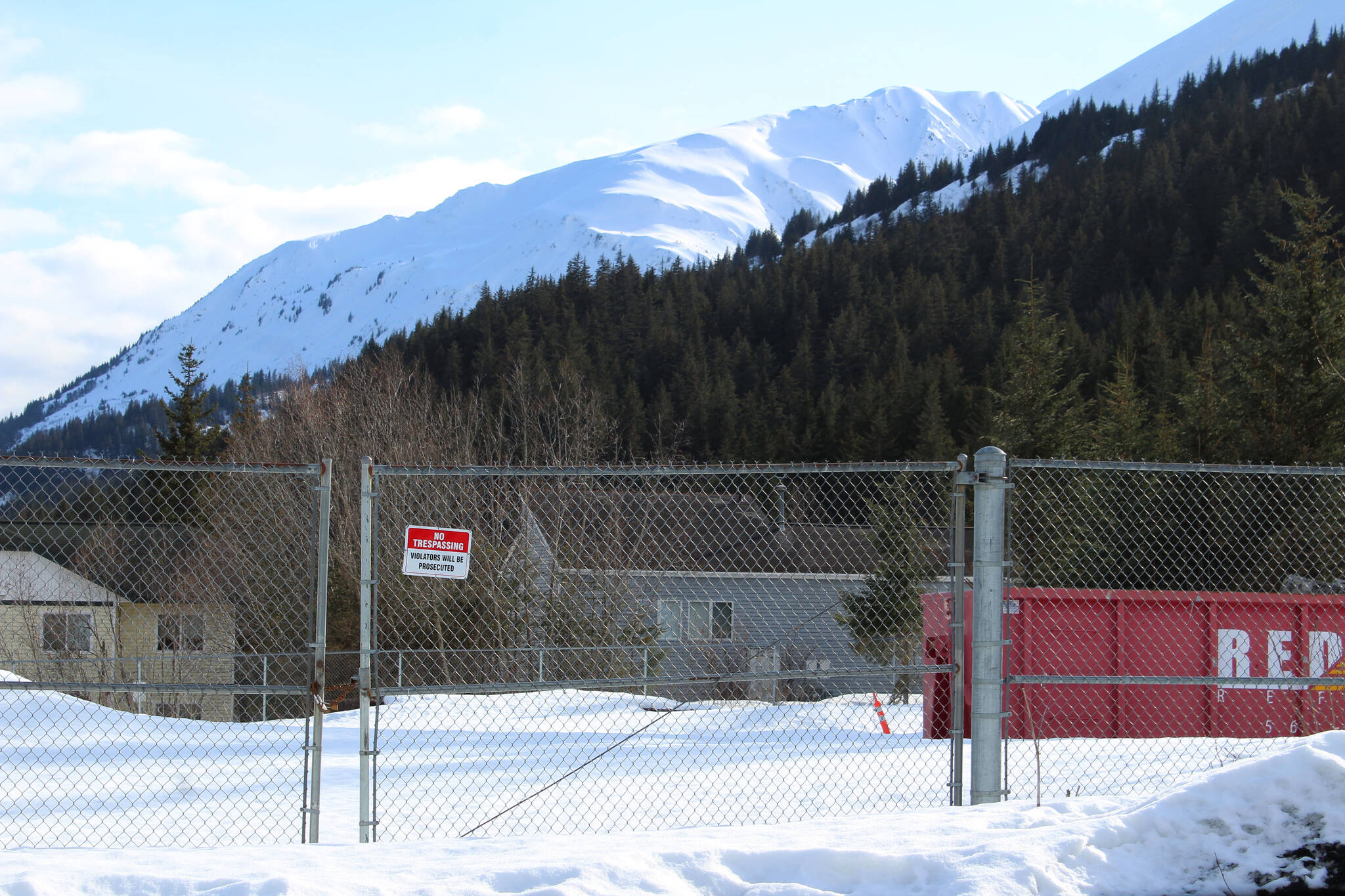Work on a memorial park at the site of the former Jesse Lee Home for Children in Seward is expected to begin in summer 2023 while the city works to dispose of contaminated material detected at the site last year.
The Jesse Lee Home, also known as the Seward Orphanage, was demolished in 2020 after a tense back-and-forth between the City of Seward and community members who opposed the move. The orphanage is well known as the place where Benny Benson, a seventh grade student, designed Alaska’s territorial flag in 1927.
Constructed between 1925 and 1926, the Jesse Lee Home included two dorms, the Jewel Guard Hall and Goode Hall, as well as the Balto Building, which was added between the dorms in 1937 to provide a dining space and kitchen. Goode Hall was demolished after suffering from severe damage in the 1964 earthquake.
That’s according to an environmental work plan prepared for Kasteler Consulting, Inc., on behalf of Coldfoot Environmental Services Inc., which the Clarion obtained from the Alaska Department of Environmental Conservation via a records request. Coldfoot was contracted by the City of Seward to demolish site building and utility infrastructure.
Until 1964, the orphanage was operated by the United Methodist Church as a place for displaced children, the report said. The site changed hands multiple times over the subsequent 35 years until the City of Seward entered into an agreement with the Friends of the Jesse Lee Home in 2000 to restore the buildings.
Soil samples taken from the site after the structures were demolished contained mercury and arsenic at levels higher than are allowed by the Alaska Department of Environmental Conservation, the report said.
Other contaminated materials found at the site include two 2,000-gallon above ground storage tanks, located in the Balto Building, which contained hundreds of gallons of fuel oil. Residual tar buildup was also found in multiple places across both the Balto and Jewel buildings.
All but the concrete foundations of the Jewel and Balto buildings were demolished in spring 2021, a few months after KCI conducted a site visit in October 2020 at the request of Coldfoot. The results of that inspection are laid out in the KCI report and detail multiple places of contamination that must be addressed before the community’s vision of a memorial park can be realized.
Underneath the Balto Building’s basement floor, for example, KCI found the remains of a completely different concrete structure, which they think the Balto Building was built on top of, according to the report. Soil samples taken from below that other structure were found to contain mercury and arsenic at levels higher than are allowed by the Alaska Department of Environmental Conservation.
In all, KCI’s environment work plan estimates that between 30 and 50 cubic yards of material needs to be removed from the site in order for any work to begin. Any soil removed from the site will be done in a way that prevents contaminated soil from being mixed with uncontaminated soil: Contaminated soil will be loaded into 20-foot, open-top shipping containers for off-site transport and disposal, the report said.
Because mercury was detected at higher levels than the department of conservation’s cleanup level, that soil cannot be thermally treated in Alaska, the report said. Instead, it will be moved to a landfill in Arlington, Oregon, that is permitted to treat, store and dispose of hazardous waste in accordance with the Code of Federal Regulations.
Seward Community Development Director Jason Bickling told members of the Seward City Council during a special meeting on March 14 that the earliest work on a park could be started in summer 2023, as summer 2022 will be devoted to decontamination efforts.
Seward City Manager Janette Bower said Wednesday that while the timeline will be largely dependent on the department of conservation, the city plans to contract out the excavation work with a preliminary cost estimate of around $100,000.
Bickling also said that a playground structure intended for the site is now on its way to Alaska. He said playground equipment, which was purchased in June 2021 with grant funds, “took a little while” to track down, but was found in a container ship off of the coast of Los Angeles, “where it had been sitting for a few months.”
“It is now strangely on the road,” Bickling said last month.
A community garden, grassy areas and a memorial plaque were all identified as future site amenities by community members in a November 2020 community survey through which more than 300 people offered feedback. One attendee at the council’s March 14 meeting said the city should work with the Soldotna Historic Preservation Commission to ensure the site’s history is displayed.
Bower said Wednesday that the city is holding a special Seward City Council meeting on Monday, April 25 to discuss the property and to give a status update to council members.
Seward City Council meetings can be streamed live on the city’s YouTube channel. More information about the Jesse Lee Home site can be found on the city’s website at cityofseward.us.
Reach reporter Ashlyn O’Hara at ashlyn.ohara@peninsulaclarion.com.

